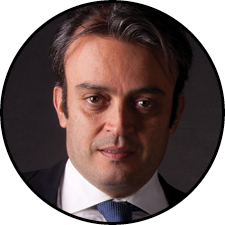
Precision measurements are crucial for cataract surgical planning. Coupled with effective patient counseling to set realistic expectations, proper diagnostic testing leads to greater patient satisfaction. My colleagues and I recently conducted a study to evaluate the repeatability of measurements with the Eyestar 900 (Haag-Streit) and compare it to two other diagnostic devices, the IOLMaster 700 (Carl Zeiss Meditec) and the Argos (Movu).
A total of 56 unoperated eyes of 56 patients who presented for a preoperative workup for cataract or corneal refractive surgery or were healthy volunteers were included in the prospective study. Exclusion criteria included the presence of or suspected keratoconus; a prior dry eye diagnosis; history of corneal disease, trauma, or other ocular surgery; and contact use in the past month. One eye of each patient was randomly selected. In each eye, three consecutive scans with the Eyestar 900 and one with both the IOLMaster 700 and Argos were performed in a random order.
RESULTS
In our study, which has been accepted for publication in the Journal of Cataract and Refractive Surgery, high repeatability and good to high agreement was achieved for all measurement parameters and among the three optical biometers, respectively.
Comparison to the IOLMaster 700. The mean values for keratometry (K) including K1, K2, and average K; anterior chamber depth (ACD); axial length (AL); and lens thickness (LT) as measured by the Eyestar 900 were not statistically significantly different compared to those measured by the IOLMaster 700. The two devices revealed excellent agreement for all axial measurements including AL, ACD, and LT; good agreement for K values; and moderate agreement for corneal astigmatism, central corneal thickness (CCT), and corneal diameter (CD). CCT and CD measurements with the Eyestar 900 were slightly higher than those with the IOLMaster 700.
Comparison to the Argos. The differences between measurements with the Eyestar 900 and the Argos were statistically significant for all tested parameters except for astigmatism. The mean AL was slightly but significantly higher with the Eyestar 900 than the Argos (24.10 ±1.27 mm vs 24.07 ±1.23 mm, respectively) due to the subgroup of eyes with long ALs (> 25 mm). The mean AL in all other eyes was nearly identical between the Eyestar 900 and Argos (23.60 ±0.82 mm and 23.59 ±0.79 mm, respectively). For mean K values (K1, K2, and average K), CD, ACD, and LT, the Eyestar 900 provided lower values compared to the Argos. Except for the statistically significant difference in mean AL in long eyes, agreement between the Eyestar 900 and Argos was excellent; in fact, it was better than that observed with the IOLMaster 700 for most parameters except CD.
Discussion. Based on our results, we believe that the Eyestar 900 could be considered almost interchangeable to the IOLMaster 700. Although there was a statistically significant difference for CCT and CD, the differences were unlikely to be clinically significant. Additionally, the Eyestar 900 produced measurements that were in agreement to those taken with the Argos and better than agreement between the Eyestar 900 and IOLMaster 700 for most parameters, including K, ACD, and LT.
CONCLUSION
The Eyestar 900 is a nice addition to our daily practice. In the study presented in this article, the repeatability of the measurements taken with the device were highly reliable and in good agreement with the measurements from other proven diagnostic technologies. The Eyestar 900 has quickly become a crucial part of our preoperative examination and assists in providing more precise and customized results for patients.
